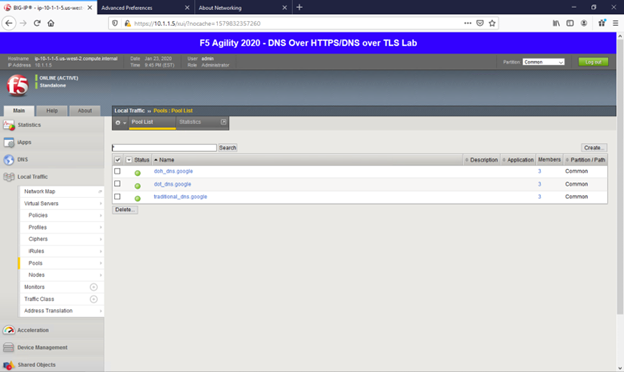What Are Application Delivery Services?
Application delivery services include technologies and processes that deliver applications to end users reliably, securely, and with optimal performance. These services act as intermediary layers between clients and application servers, addressing issues such as load balancing, traffic management, security, and application acceleration.
The goal is to maximize application uptime and responsiveness while minimizing latency, outages, and security risks. Efficient application delivery services are essential as modern applications grow more complex and are distributed across cloud, hybrid, and on-premises environments.
With increasing user expectations and diversified application architectures, delivery services ensure scalability, adaptability, and the enforcement of access policies. They are critical for sustaining smooth digital experiences and meeting service-level objectives demanded by organizations and end users.
This is part of a series of articles about application performance.
In this article:
Application Delivery Controllers (ADCs)
Application Delivery Controllers are specialized network appliances or software platforms that combine multiple functions essential for application delivery. ADCs handle load balancing, SSL offloading, web application firewalling, and sometimes caching and compression. They provide granular control over traffic management and enable secure, fast, and reliable delivery of applications across diverse network environments.
Modern ADCs support extensive programmability and integration with DevOps pipelines, enabling policy-driven responses to changing network or application conditions. They offer deep visibility into traffic flows and automate the enforcement of security or optimization rules, which is particularly important as enterprises migrate workloads across mixed cloud and on-premises infrastructures.
Content Delivery Networks (CDNs)
Content Delivery Networks distribute application content—such as images, scripts, or media files—to strategically located proxy servers around the world. By caching and serving content from nodes geographically closer to users, CDNs reduce latency and improve page load times, regardless of where the origin server is hosted. This is useful for global organizations or high-traffic applications.
CDNs also bolster application availability and reliability by absorbing traffic surges, offloading origin servers, and mitigating risks from large-scale attacks like DDoS. Modern CDN offerings integrate dynamic content acceleration, API caching, and edge security.
Application Delivery Networks (ADNs)
Application Delivery Networks extend beyond CDNs by including application optimization, security, and intelligent routing across multiple, interconnected data centers or clouds. ADNs dynamically adapt to shifts in user demand or application location, steering traffic via the most efficient and reliable paths. This improves both end-user experience and backend operational efficiency.
By integrating components like WAN optimization and application-aware routing, ADNs minimize network congestion, accelerate application traffic, and ensure policy-compliant data transit. As organizations adopt hybrid and multi-cloud strategies, ADNs provide the abstraction and orchestration necessary for seamless, secure application delivery across distributed infrastructures.
Load Balancing
Load balancing is central to application delivery, distributing incoming network or application traffic across multiple servers to avoid overload on any single resource. By evenly allocating requests, load balancers prevent performance bottlenecks and ensure high availability, even during traffic spikes or individual server failures. Algorithms may be static (round robin) or dynamic, taking current server health and load into account.
The benefits of load balancing include reduced downtime and improved user experience through consistent application responsiveness. As cloud-native architectures and microservices gain prevalence, load balancing adapts to manage traffic within ephemeral or auto-scaling environments, integrating with orchestration systems for application scaling and failover.
Monitoring and Analytics
Monitoring and analytics enable proactive management and optimization of application performance by providing visibility into traffic patterns, user behavior, and infrastructure health. Real-time metrics and historical data help identify bottlenecks, anticipate capacity needs, and quickly troubleshoot outages or degradation before they impact users.
Advanced analytics tools also assist in security threat detection by highlighting anomalies and enabling root-cause analysis. Integrating these insights with automation frameworks allows organizations to dynamically scale resources, adjust policies, or implement remedial actions, ensuring applications remain resilient and compliant in dynamic network environments.
Learn more in our detailed guide to application performance monitoring

Radware Alteon is a next-generation application delivery controller (ADC) that optimizes and secures application traffic across hybrid and multi-cloud environments. Designed to deliver high availability, scalability, and performance, Alteon enhances the digital experience for users by intelligently distributing workloads and providing integrated security.
Key features include:
- Advanced load balancing: Distributes traffic across servers and data centers using static and dynamic methods for maximum uptime.
- Application health monitoring: Continuously tracks server and application availability to ensure intelligent failover and optimal routing.
- SSL offloading and acceleration: Offloads encrypted traffic processing from backend servers to improve performance and scalability.
- Application-centric visibility: Provides in-depth analytics into application behavior, performance, and security events through a centralized dashboard.
- Web application protection: Integrates with Radware’s AppWall for built-in WAF capabilities that guard against OWASP Top 10 threats and Layer 7 DDoS attacks.
F5 BIG-IP Local Traffic Manager (LTM) is a component of F5’s Application Delivery and Security Platform, intended to optimize and secure application traffic across hybrid and multicloud environments. It sits between clients and application servers to ensure availability, performance, and security.
Key features include:
- Load balancing: Distributes traffic using static and dynamic algorithms to maximize availability.
- Traffic steering: Routes traffic types to the most appropriate servers.
- Health monitoring: Continuously checks the health and performance of application resources to enable failover and routing.
- TCP optimization: Improves performance for mobile and remote users by accelerating TCP traffic and reducing latency.
- Caching: Offloads repetitive content requests from backend servers to improve performance and scalability.

Source: F5

AWS Elastic Load Balancing (ELB) is a managed service that automatically distributes incoming application traffic across targets such as EC2 instances, containers, and IP addresses within one or more Availability Zones. By monitoring target health and routing traffic to healthy endpoints, it helps ensure availability and fault tolerance.
Key features include:
- Multiple load balancer types: Supports Application Load Balancers (for HTTP/HTTPS and advanced routing), Network Load Balancers (for high-performance TCP/UDP traffic), and Gateway Load Balancers (for third-party virtual appliances).
- Automatic scaling: Adjusts load balancer capacity based on traffic levels.
- Health checks: Continuously verifies the status of targets and routes traffic to those marked as healthy.
- SSL termination: Offloads TLS/SSL encryption and decryption, reducing the load on backend resources and simplifying certificate management via AWS Certificate Manager.
- High availability across zones: Spreads traffic across multiple Availability Zones to improve fault tolerance and service continuity.
Microsoft Azure Application Gateway is a layer 7 (application layer) load balancer to manage web traffic for web applications. Unlike traditional layer 4 load balancers that rely on IP and port information, Application Gateway evaluates HTTP request attributes like URL path and host headers to make routing decisions.
Key features include:
- Application layer load balancing: Routes traffic based on HTTP attributes such as URL paths and host headers.
- URL-based routing: Directs different URL segments (e.g.,
/images, /video) to server pools optimized for that content type.
- Web application firewall (WAF): Offers protection against common web vulnerabilities with rules based on Microsoft Threat Intelligence.
- Bot protection: Blocks automated threats using behavior-based bot manager rules and anomaly detection
- Private link integration: Supports private deployments with secure, internal-only access to backend resources via Azure Private Link.
NetScaler ADC is an application delivery controller that provides traffic management, optimization, and security for web applications across layers 4 to 7 of the OSI model. Designed for system and network administrators, it operates as an application switch that analyzes application-level traffic to make decisions about routing, filtering, and optimizing connections.
Key features include:
- Layer 4–7 traffic management: Makes per-request load balancing decisions using HTTP, TCP, and application-layer data.
- Load balancing: Supports a variety of algorithms and health checks to route traffic.
- Application firewall: Offers protection against application-layer threats such as DoS attacks, cross-site scripting (XSS), SQL injection, and identity theft.
- SSL offloading: Reduces server workload by handling encryption and decryption tasks.
- Traffic optimization: Accelerates delivery by performing compression, TCP buffering, caching, and client keep-alive.
A10 Networks Thunder ADC is an application delivery controller to ensure secure, highly available, and accelerated application delivery across hybrid cloud environments. Supporting a range of deployment options, from hardware to containers, it offers full-proxy load balancing and traffic optimization.
Key features include:
- L4–L7 load balancing: Delivers traffic distribution using customizable health checks, traffic control, and aFleX® scripting.
- Global server load balancing (GSLB): Enables cross-region, multi-cloud continuity by directing users to the best-performing or geographically closest servers.
- Deployment options: Available in hardware, virtual, bare metal, cloud, and containerized form factors with license portability via FlexPool.
- SSL offloading: Reduces server workload by handling encryption and decryption tasks.
- Traffic optimization: Accelerates delivery by performing compression, TCP buffering, caching, and client keep-alive.
Kemp LoadMaster is an ADC to ensure high availability, security, and performance for applications across hybrid, cloud, and on-premises environments. Available as a virtual, hardware, or cloud appliance, it offers deployment options and capabilities including traffic optimization, SSL offload, and web application protection.
Key features include:
- Load balancing: Delivers traffic distribution with support for content switching, URL rewriting, and session persistence.
- Global server load balancing (GSLB): Ensures application resilience across data centers and clouds by routing traffic based on server health and geolocation.
- Web application firewall (WAF): Protects web applications from common exploits and OWASP Top 10 vulnerabilities.
- SSL/TLS offload: Offloads encryption and decryption tasks from backend servers.
- Certificate lifecycle management: Centralized visibility and control of certificates through LoadMaster 360.
HAProxy is a software load balancer and reverse proxy for busy applications and websites. It provides application traffic management, security, and observability when deployed in cloud, hybrid, or on-premises environments. It has an open-source foundation and enterprise offerings.
Key features include:
- Load balancing: Delivers low-latency, multi-protocol support (HTTP, TCP, UDP, QUIC) and can handle millions of transactions per second.
- Flexible deployment: Runs consistently across Linux servers, containers, VMs, and public or private clouds.
- HAProxy Enterprise: Provides load balancing, API/AI gateway functionality, Kubernetes ingress support, and SSL offloading.
- HAProxy Fusion control plane: Centralizes multi-cluster, multi-cloud management with lifecycle automation, monitoring, and policy control.
- HAProxy Edge: Adds a secure, global application delivery network (ADN) with machine learning-based threat intelligence and edge protection.
Conclusion
Application delivery services help ensure that applications remain available, responsive, and secure across diverse environments. By combining traffic management, optimization, and security functions, these services address the challenges posed by modern distributed and cloud-native architectures. As user demand and application complexity continue to grow, the need for scalable, policy-driven, and performance-focused delivery solutions becomes increasingly essential for maintaining service continuity.